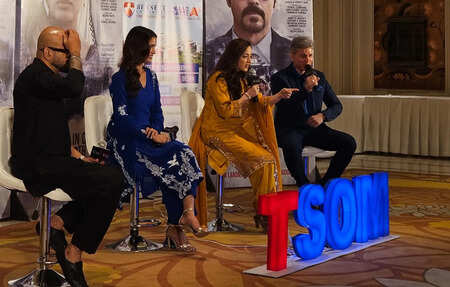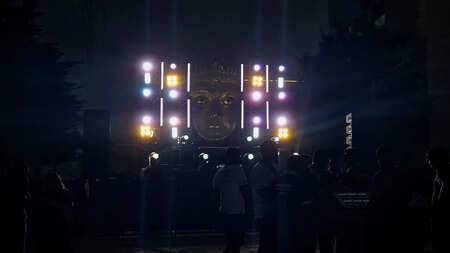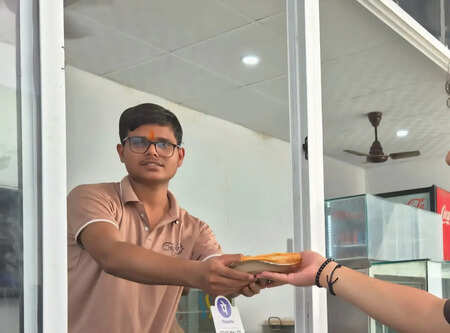Blind voters need new norms
Times of Bennett | Updated: Jan 29, 2022 17:09

By RITIKA CHOUDHARY
NOIDA: To make the election process foolproof for visually challenged voters, an independent policy change researcher has appealed to theElection Commission of India to introduce an image text-to-speech (ITTS ) conversion software in the voting machine which can verify the vote with audio.
“Voters who are not visually challenged can file a complaint with the presiding officer if the paper slip does not match with the vote that they have cast. However, visually impaired voters cann0t verify their votes like others using this system, which results in discrimination against them,”Akshay Bajad , academic writer and independent researcher on good governance and public policy, said.
Just like the voter-verified paper audit trail (VVPAT ) application provides an additional check. ITTS would do the same for visually impaired voters.
Visually impaired voters can vote with the assistance of a companion, but the Election Commission wanted them to vote independently and, hence, provided braille signage on the balloting units of the EVMs, which, however, comes without a vote verification facility.
“The right to vote also includes the right to verify the vote because voting cannot be considered complete if one cannot verify it,”Bajad points out, suggesting an ITTS conversion software as a “feasible and implementable accommodation in the voting process for the blind and low vision voters to place them at par with other voters in verifying their vote”.
If this ITTS facility is introduced,Bajad says, Braille-enabled voters will be able to vote and verify their vote independently and voters not well versed with Braille will be able to at least verify their votes independently.
“The ITTS is a simple, inexpensive and proven technology. It has many applications, including a C-Pen reader for visually challenged people so that they can move the C-pen over the line of text for it to read it aloud in a human-sounding voice,” Bajad explains. It is not that the EVMs will have to be overhauled. “All that the election commission needs to do is fit the standalone ITTS device into theVVPAT machine without making changes to other components,” he says.
“The ITTS system does not save the image, text or audio files generated during audio verification due to its limited memory. Hence, there's no threat to vote secrecy,” Bajad says.
Bajad has forwarded his suggestion to the Election Commission, his efforts were also “appreciated” by the National Association for the Blind
The Image to Text conversion voting system for visually impaired voters is already available in Israel. Speech-aiding voting system for visually impaired voters is available in the US, Brazil and Belgium. Australia uses the telephone voting system.
“If the EC can provide facilities like wheelchairs and ramps at polling booths, it should also provide an audio verification system to the visually impaired because ITTS is a stand-alone software and not vulnerable to manipulation,” Bajad argued
NOIDA: To make the election process foolproof for visually challenged voters, an independent policy change researcher has appealed to the
“Voters who are not visually challenged can file a complaint with the presiding officer if the paper slip does not match with the vote that they have cast. However, visually impaired voters cann0t verify their votes like others using this system, which results in discrimination against them,”
Just like the voter-verified paper audit trail (
Visually impaired voters can vote with the assistance of a companion, but the Election Commission wanted them to vote independently and, hence, provided braille signage on the balloting units of the EVMs, which, however, comes without a vote verification facility.
“The right to vote also includes the right to verify the vote because voting cannot be considered complete if one cannot verify it,”
If this ITTS facility is introduced,
“The ITTS is a simple, inexpensive and proven technology. It has many applications, including a C-Pen reader for visually challenged people so that they can move the C-pen over the line of text for it to read it aloud in a human-sounding voice,” Bajad explains. It is not that the EVMs will have to be overhauled. “All that the election commission needs to do is fit the standalone ITTS device into the
“The ITTS system does not save the image, text or audio files generated during audio verification due to its limited memory. Hence, there's no threat to vote secrecy,” Bajad says.
Bajad has forwarded his suggestion to the Election Commission, his efforts were also “appreciated” by the National Association for the Blind
The Image to Text conversion voting system for visually impaired voters is already available in Israel. Speech-aiding voting system for visually impaired voters is available in the US, Brazil and Belgium. Australia uses the telephone voting system.
“If the EC can provide facilities like wheelchairs and ramps at polling booths, it should also provide an audio verification system to the visually impaired because ITTS is a stand-alone software and not vulnerable to manipulation,” Bajad argued







